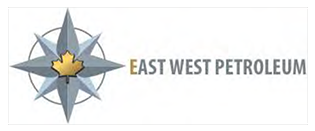Drilling of three wells on South Cheal and one well on Southern Cross is scheduled for Q4 of this year. The total net cost to East West of the 2013 New Zealand drilling program is estimated at C$12.4 million and is fully funded out of East West’s existing cash balance of approximately C$22.5 million. Summaries of the 2013 New Zealand work program and prospective resources being targeted are provided below:
| Permit |
Name |
|
# of wells |
Target |
|
Grosscosts |
Netcostto EW |
| PEP 54877 |
East Cheal (EW 30%) |
|
5 |
Miocene ( |
|
$10.5 million |
$6.1 million |
| PEP 54879 |
South Cheal (EW 50%) |
|
3 |
Miocene ( |
|
$6.3 million |
$4.2 million |
| PEP 54876 |
Southern Cross (EW 50%) |
|
1 |
Miocene ( |
|
$2.1 million |
$2.1 million |
| Total |
|
|
9 |
|
|
$18.4 million |
$12.4 million |
|
|
|
|
|
|
|
|
|
|
|
|
| Prospective Resources per Permit |
|
|
EW |
Low (P90) |
|
Best (P50) |
High (P10) |
| Permit |
Name |
Interest |
Estimate |
|
Estimate |
Estimate |
|
|
% |
mmbbl |
|
mmbbl |
mmbbl |
| 54877 (1,2) |
Cheal North |
30% |
5.06 |
|
11.31 |
25.41 |
| 54876 (1,2) |
Southern Cross |
50% |
1.04 |
|
2.21 |
4.6 |
| 54879 (1,2) |
Cheal South |
50% |
1.31 |
|
3.03 |
6.98 |
| Total |
|
|
7.41 |
|
16.55 |
36.99 |
| (1) |
The resource estimates in this news release were prepared on nine prospects with an effective date of June, 30, 2013. These estimates have been internally prepared by the Operators’ internal qualified reserves evaluator in accordance with NI 51-101 and the Canadian Oil and Gas Evaluations Handbook. |
| (2) |
Exploration for hydrocarbons is a speculative venture necessarily involving substantial risk. EW’s future success in exploiting and increasing its current reserve base will depend on its ability to explore and then if deemed to be appropriate, develop the above properties that are capable of commercial production. However, there is no assurance that EW’s future exploration and development efforts will result in the discovery or development of additional commercial accumulations of oil and natural gas. In addition, even if further hydrocarbons are discovered, the costs of extracting and delivering the hydrocarbons to market and variations in the market price may render uneconomic any discovered deposit. Geological conditions are variable and unpredictable. Even if production is commenced from a well, the quantity of hydrocarbons produced inevitably will decline over time, and production may be adversely affected or may have to be terminated altogether if EW encounters unforeseen geological conditions. EW is subject to uncertainties related to the proximity of any reserves that it may discover to pipelines and processing facilities. It expects that its operational costs will increase proportionally to the remoteness of, and any restrictions on access to, the properties on which any such reserves may be found. Adverse climatic conditions at such properties may also hinder EW’s ability to carry on exploration or production activities continuously throughout any given year. The significant positive factors that are relevant to the estimate contained in the resource assessment are: |
| • |
proven production in close proximity; |
| • |
proven commercial quality reservoirs in close proximity; and |
| • |
oil and gas shows while drilling wells nearby; and |
| • |
nearby infrastructure with excess capacity |
| The significant negative factors that are relevant to the estimate contained in the Resource Assessment are: |
| • |
tectonically complex geology could compromise seal potential; and |
| • |
seismic attribute mapping in the Taranaki Basin area can be indicative but not certain in identifying proven resource. |

